The Culture Conundrum: What In-Person Work Mandates Get Wrong

Apr 20, 2023 | 5 min read
Over the last year, an increasing number of organizations have abandoned the remote work model in favor of hybrid or full return-to-work policies. This is often done in the name of culture, with executive leadership expecting to revive or renew the same culture the company had pre-pandemic, simply through in-office interactions. The increasing popularity of these policies made us wonder – does being in the office actually equal a vibrant organizational culture?
Wiley Workplace Intelligence got to work gathering insight from 5,005 people hailing from a variety of work environments and the results were surprising. We found that regardless of position, location, or seniority, where people worked (whether it was in-person, remote, or hybrid) had minimal impact on levels of connectedness or feeling valued by their organizations, two common markers of workplace culture. This tells us that in-person work doesn't always guarantee a thriving culture, especially post-pandemic when people's values and priorities have shifted.
Where Are People Working?
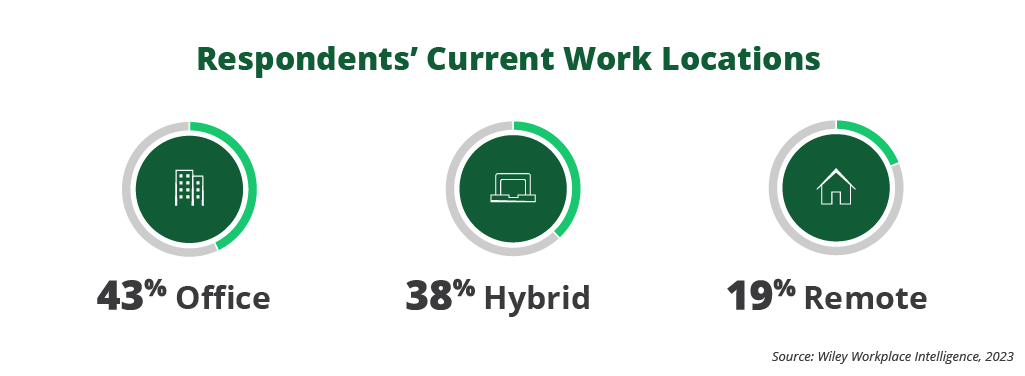
Interestingly, 63% of supervisors, specifically, reported working in person, which aligns with the trend that leadership is often expected to lead the return to office revolution by example. Our recent post about the tightrope managers are walking in the new workplace is relevant here, as our research confirms they are expected to be in the office more often than individual contributors.
We found that regardless of role, our respondents want flexibility where they work in order to feel most productive. In fact, only 18% of those surveyed said that where they work doesn’t impact their productivity, speaking to the importance of autonomy when considering the work environment.
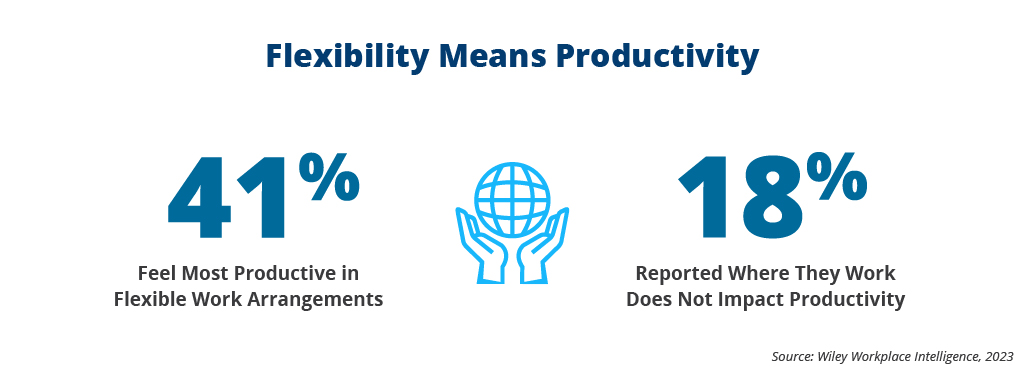
Where Are People Working?
One of the many possible benefits of remote or flexible work arrangements is the equity it can provide employees and applicants – not to mention the benefits to the organization of having a broader pool of talent outside of their geographical area to consider for positions. Creating blanket policies that enforce in-person attendance can potentially exclude individuals who, for any variety of reasons, would otherwise be an incredible asset to an organization.
On the flip side of necessity is preference. While many organizations are enforcing these kinds of policies in the name of culture, there are just as many companies who are not. Organizations can lose out on talent that will simply leave or avoid applying due to policies that feel restrictive or outdated because they don't take into consideration the evolving state of the workforce.
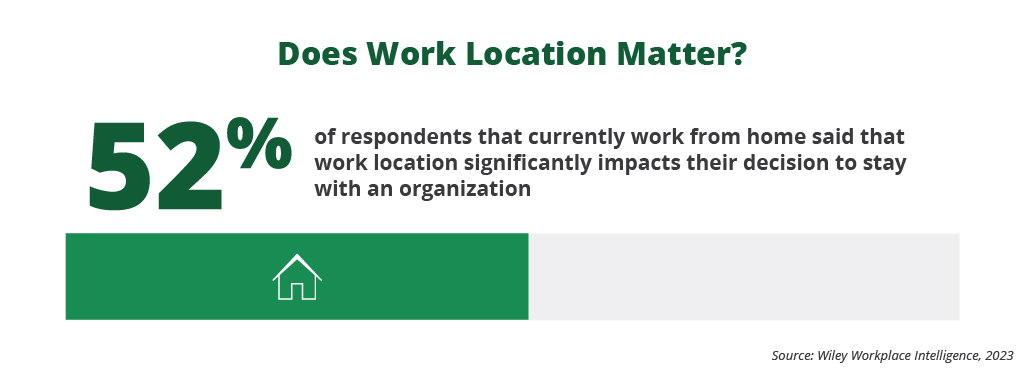
While culture appears to be the rallying cry of organizations that are mandating time in the office, our research shows that there is an overall lack of clarity around the true reasons people are being asked to spend more time in person. In some organizations, while time in the office is mandated or encouraged, there is ambiguity around whether or not there is a real policy in place, and to what lengths it is being enforced. One in five people managers said they did not know if there was a return to the office policy in place in their organization. That highlights potential communication issues that can plague organizations, which can affect overall well-being.
What Culture Really Means
Regardless of whether you are working fully remote, in-person, or hybrid, the factors that most greatly impact the feelings of connectedness and being valued (the less tangible qualities that go into creating a positive culture) are important – arguably more important than whether or not you are sharing the same physical space. When it comes to creating connected, cohesive teams that produce great results, the recipe is the same regardless of the work model.
Broken down by category, you can see that our respondents reported similar amounts of connectedness to their colleagues and organizations, with in-person employees ranking 6% higher than remote workers.
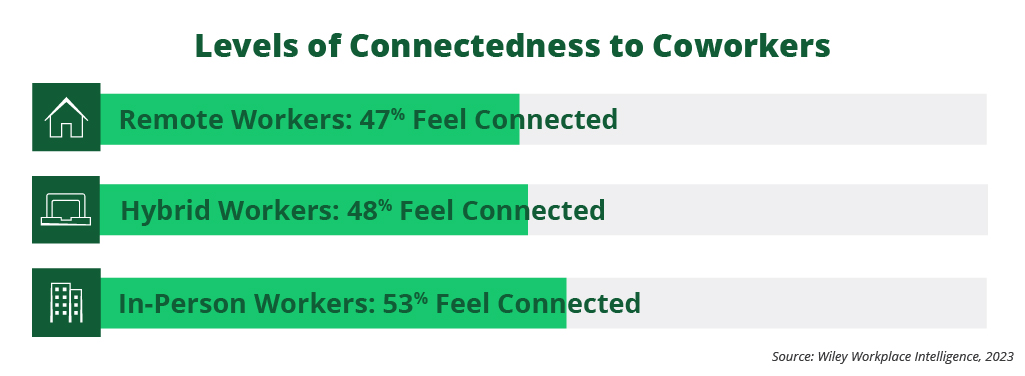
Feeling valued by your management team and organization at large is also an essential element of a positive work culture and similar to feelings of connectedness, our results did not show a huge difference in results. This time in-person employees ranked just slightly lower in feeling valued than their remote or hybrid counterparts.
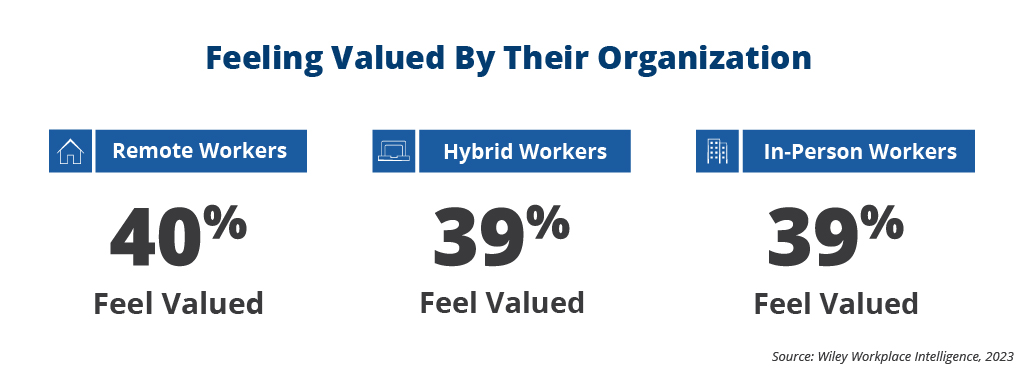
These insights suggest that organizations requiring people to be present in the same physical space, without putting effort into relationship-building and valuing their employees, are going to be disappointed when the culture they were hoping would spring to life doesn’t materialize.
Optimize Culture – From Anywhere
While organizations seek to strike the right balance when it comes to working environments, it is important to consider why they are asking employees to make these changes and what they may give up in the process of creating these policies. Whether it be a smaller pool of talent to benefit from, less equity in the hiring process, or employees leaving the company for organizations with more flexible work environments, it is important to have a proactive strategy to build culture, whatever your work model.
Regardless of where your people are working, facilitated learning experiences are a great way to optimize organizational culture either virtually or in person. Trust-building teamwork solutions like The Five Behaviors, empathy and cohesion-building experiences like Everything DiSC, or leadership development solutions like The Leadership Challenge can align entire organizations behind a vision to become a more cohesive unit, no matter where they are working from. That is culture building we can get behind.
